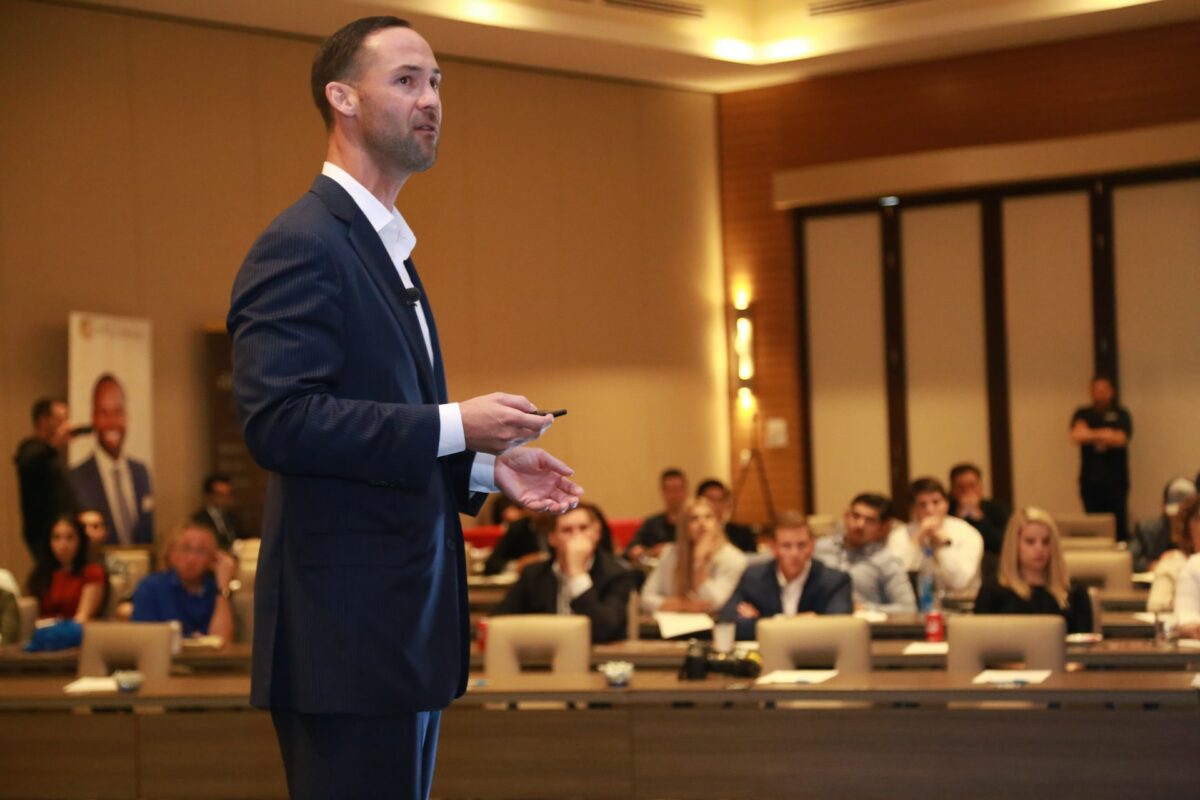Hypno-Synectics is a technique that can help marketers and planners do a better job of getting respondents to brainstorm in focus groups. It combines the 50-year old brainstorming technique of Synectics (the original “outside-the-box” technique) with the scientific use of hypnosis.
The main problems in brainstorming are (a) getting respondents to access their own knowledge bank, (b) using that knowledge in a brainstorming process, and then (c) “cajoling” them to share the new ideas with other respondents in the group. Through the combination of hypnosis and the techniques of Synectics, these brainstorming problems can be solved, and the brainstorming process can be enhanced. Let’s take a look at the key elements in the process and the process itself.
What Is Synetics?
The term Synectics comes from the Greek word synectikos which means “bringing different things into a unified connection.” The key brainstorming concept here is to get people in the focus group to focus on seemingly disconnected words, images and concepts in order to develop something new and original. The Synectics method gets respondents to use non-rational thought processes by “making the strange appear familiar,” and by “making the familiar appear strange.” As an example, respondents might be asked to think about new ways to show a car in a TV. commercial; but instead of the traditional method of the camera following the car along the road, they would be told to think about showing the car from the viewpoint of a pebble in the road, or by a nail in the tire, or the chrome trim on the door. New ideas will come from this type of thinking.
Why Use Hypnosis?
Hypnosis enables a respondent to get in touch with their subconscious, where their knowledge bank memories and emotions are stored. The subconscious is like a hard drive containing information about everyone and everything they have ever come across in their lives. When people are in the “awake” state, it is extremely difficult for them to recall even a tiny part of their past experiences; but in hypnosis, through a process called “age regression” they can do this with ease. This is important since we want respondents to be able to recall and share their past experiences as part of the brainstorming process.
Hypnosis also enables respondents to suspend their “rational” side and more freely bring out absurd, crazy and weird ideas – ideas they might have withheld if they were awake for fear of sounding strange, or because of peer pressure in the session. These “crazy” ideas are often the launching pads for great practical ideas in the session.
The Facilitator
The “Facilitator” (or moderator in focus groups) in the Hypno-Synectics session prepares the stimulus material for the brainstorming, in consultation with the client. The stimulus material consists of the exercises and questions to be used to get the brainstorming session going and keep it on track, using the Synectics techniques The Facilitator also conducts the hypnosis process for the group.
Respondents For The Session
There are usually 6 to 8 respondents in each brainstorming session, usually chosen based on typical criteria such as demographics and product and brand usage.
The Hypnosis Process
At the start of the session, the respondents are hypnotized as a group. While in hypnosis, respondents will be very relaxed and will be told that it is “ok” to provide any ideas that come to them from their subconscious mind.
The Initial Brainstorming Exercise
The first step in the session is to state and define the brainstorming subject. Once the subject is defined, the initial exercise gathers information about it from the subconscious minds of the respondents. One key way to do this is to “age-regress” the respondents “back in time” to earlier events in their lives where they were involved in the subject of the brainstorming session. Each respondent probably has had some experiences relative to the subject, and this information will be brought out.
All of the experiences and ideas from this segment of the session will be written on large sheets of paper and pasted up on the walls of the room where the session is being held (all the ideas from the session are posted this way as well). As ideas come out, respondents will be encouraged to ‘hitchhike” on what they hear, and those ideas will also be written up too. At the end of this segment, respondents will now have a more complete understanding of the subject and will have come up with some initial insights about it.
Additional Hypno-Synetics Techniques
At this point in the session, respondents have been exposed to the subject in detail and have heard a good deal about experiences from the other respondents. They now have a base of information as a starting point. And, because they are in a state of hypnosis, they have been “trained” to share any ideas with the group, no matter how “crazy” they sound.
There are many different Hypno–Synectics brainstorming exercises that can now be used, depending on the goal of the session. Some of the more common ones are described below.
Direct Analogies
The “Direct Analogies” exercise is used in Hypno–Synectics to help respondents break up their existing minds sets. Here we tell respondents to find some similarity between things that are otherwise dissimilar. For example, Brunel, the inventor of underwater tunnels, solved some of his construction problems by watching and thinking about a shipworm tunnel into a timber. In the “direct analogy” you try to find some parallel situation that is analogous to the one you are brainstorming about. As an example, Let’s assume we are brainstorming new ways to promote an American automobile brand. Here are some examples of “Direct Analogy” questions that could be presented to the group:
- How is buying a car like sky diving
- How is buying a car like playing a game of solitaire
- How is buying a car like a hair dryer
- How is buying a car like seeing a kangaroo for the first time
After hearing everyone’s answers to a particular “Direct Analogy” question, respondents would be told to hitchhike on the answers and come up with ideas about new motivators to get people to consider the auto brand. As an example, a respondent might say that “buying a car is like sky diving” because they always feel like they are “floating on air” when they get a new car. And, another respondent might hitchhike and say, “Floating on air reminds me of the big balloons that car dealers put up at their showrooms.” Then, another respondent might say, ” Maybe the brand should have a big car-shaped balloon in the Macy’s Thanksgiving Day parade because that’s a really American holiday to show off really American cars.”
Personal Analogies
In the “Personal Analogy” exercise, we direct the respondents to become part of the subject of the session: For example, if you were trying to come up with new ways to combat subway graffiti, they could be told to envision themselves as a spray paint can and then try to come up with solutions or ideas. Or you might ask respondents to visualize themselves as balloons and to think about how to prevent graffiti on a famous building like the Eiffel Tower (and then respondents would discuss those ideas relative to the subway graffiti situation to see if they are feasible).
Role Playing
Hypno-Synectics uses “Role-playing” as a way to come up with new ideas. As an example, a respondent might be given the role of Marie Antoinette and told to “get into the role: the costume, the 18th century environment of Paris, etc.” and would then be told to decide which brand of automobile she would buy. Again, by making the familiar into something “strange” we hope to come up with a new way to look at the subject.
Another example of “role-playing” would be to give the respondent the role of Willie Shoemaker, the famous jockey, and ask them to decide how Willie would go about selling a particular auto brand. The respondent might come up with this idea: “Willie would re-create an historic race between a horse and an early 20th Century model of that car brand at a race track, to remind people of the brand’s legacy in the automotive industry.”
Then another respondent might hitchhike and say, “That reminds me of that brand’s vehicles in NASCAR races.” And, another respondent might say, “The brand should have a video game at its dealers where you drive a “virtual” NASCAR vehicle.” Other respondents would be given different roles and asked how they would sell the auto brand: e.g., Albert Einstein, John Wayne, Donnie and Marie Osmond, etc. The idea is to get respondents to take something familiar and put it into a strange context from which something new can be generated.
Additional Exercises
There are many additional exercises for the group to use as stimulus for their brainstorming. A few of them are the following:
- Setting up examples that defy physical laws (“What would it be like if there was no gravity in the car dealer’s showroom ”)
- Putting respondents into anthropomorphic situations (“You are a butterfly in the car dealer’s showroom – what car features are you looking for?)
- Using non-verbal symbols (“Who would you choose to write some unique music to symbolize that car brand ?”)
With each exercise, respondents hitchhike on each others ideas and the Facilitator then brings the ideas back to the task of achieving the brainstorming session’s goals. During the brainstorming segments respondents will stay in the hypnosis state, usually with their eyes closed. However, at times they will be told to stay in hypnosis but open their eyes so they can see ideas pasted up on the walls.
End Of The Session
After the key brainstorming exercises are concluded, the Facilitator might ask the respondents to focus on some of the best exercise results and brainstorm in a more directed fashion just about those ideas. There can also be a segment at the end where the respondents are asked to exercise their critical judgments about some of the ideas developed. A typical Hypno-Synectics brainstorming session can run for as long as 2 1/2 hours, but the length of time can be adjusted depending on the project’s requirements.
Results From The Sessions
At the conclusion of the session, the Facilitator will distribute all the ideas generated to the client. After reviewing the ideas, the client may wish to add on to the list or provide additional comments. Once all the comments have been received, the Facilitator will provide a written summary of the session, including conclusions and recommendations based on the session.
Contributed to Branding Strategy Insider by: Hal Goldberg
The Blake Project Can Help: Accelerate Brand Growth Through Powerful Emotional Connections
Branding Strategy Insider is a service of The Blake Project: A strategic brand consultancy specializing in Brand Research, Brand Strategy, Brand Licensing and Brand Education





One comment
Mike Murphy
January 18, 2011 at 11:16 am
Excellent points. Even if you don’t think it is the best or a useful method for digging up information, it shows all those fine lines we should take into account in focus groups. Too often we only end up hearing what we want to hear…
Comments are closed.